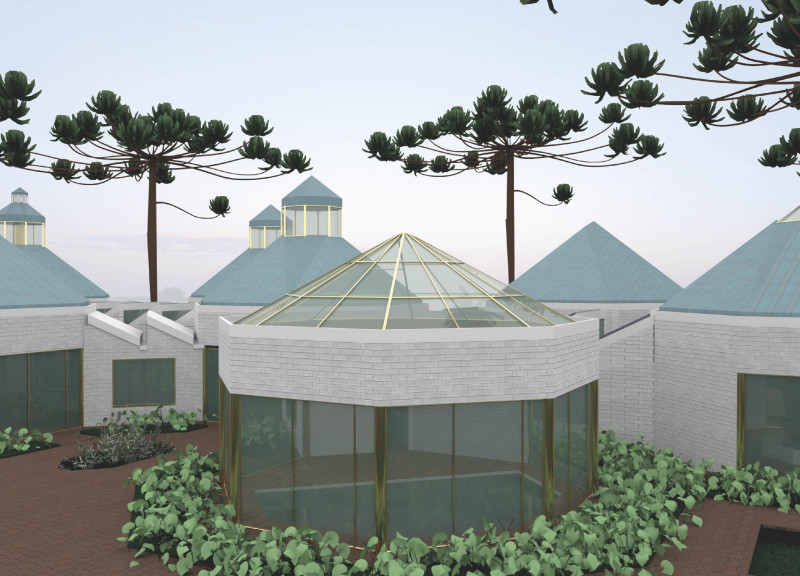5 key facts about this project
The design of a palliative care facility focuses on creating a comfortable and supportive environment for patients and their families. Located in Curitiba, Paraná, Brazil, a city known for its mild climate, the design incorporates passive strategies to enhance the experience of those who use the space. By employing a domestic architectural style, the facility aims to foster a sense of familiarity and comfort. The layout promotes both serenity and interaction, essential for the emotional well-being of its occupants.
Design Concept
Interconnected octagonal forms are central to the layout, surrounding a therapeutic garden. This garden plays a crucial role in promoting relaxation and connection to nature. It consists of two main sections: an inner topiary garden that offers security and an outer sinuous garden with a pond designed for water therapy. These natural elements create a calming atmosphere and contribute to the overall mental health of patients and visitors.
Spatial Organization
Interior spaces are organized to encourage social interaction while also allowing for privacy. Each room features large windows that provide views of the garden and allow for ample natural light. This strategic design enhances the tranquil atmosphere within the building. Staff areas are positioned near the entrance to minimize disturbances in patient zones, ensuring peace throughout the facility.
Materiality
The materials selected for the facility reflect a focus on sustainability and functionality. Insulated cavity walls are constructed from brick filled with soyfoam and rockwool, finished with plasterboard, promoting energy efficiency. Double-glazed windows with a cyan tint help control light entry, creating comfortable indoor conditions while maximizing natural illumination.
Interior Features
The facility includes specialized rooms such as a creative therapies area, an indoor horticultural space, and a designated area for pet therapy. An immersive room equipped with virtual reality technology allows patients to connect with their personal histories and loved ones, strengthening emotional bonds. Furnishings are designed for personalization, offering a variety of colors to enhance comfort and individual expression.
Design elements come together to create an environment that prioritizes patient-centered care. Every detail is considered, focusing on serenity, nature, and personalization to encourage healing and connection.



















































